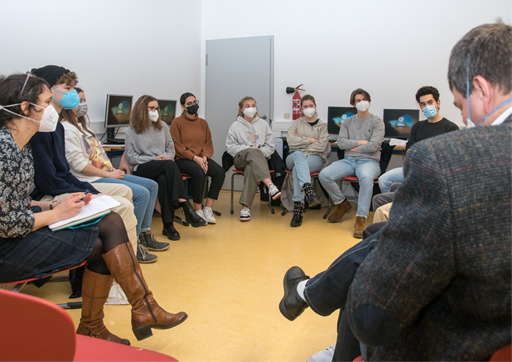2.1 Exploring religious views in your group
The IN PRACTICE activity below should be completed at your first workshop and will help to give you an idea of your young participants’ views on religion.
IN PRACTICE: Exploring views in your group
As an initial step we recommend using a simple questionnaire and discussion both to inform yourself further on the views of the young people you work with, and to stimulate them to begin to think more about the issues for themselves. You should consider in your context whether, in view of potential sensitivities, you should make participation voluntary, and in any case avoid forcing contributions from individuals who may feel uncomfortable. The RETOPEA project team’s experience, however, has been that young people are usually very willing to participate and indeed welcome the opportunity to discuss these issues.

First, ask participants to spend five to ten minutes to quietly and anonymously complete a short written questionnaire on the following lines:
How important (if at all) is religion to your life?
Please circle a score between 1 (not important at all) and 5 (of great importance).
Have you ever observed prejudice or bias against religion in the area where you live?
Please circle one of the following answers: Yes – No – Not sure.
Have you ever experienced bias against your religious or non-religious beliefs?
Please circle one of the following answers: Yes frequently – Yes sometimes – Hardly ever – No – Not sure.
You should also allow space for open comments and explanations. The questionnaire should prompt useful initial thinking that then leads into subsequent lively discussion.
Click here for a downloadable version of the questionnaire [Tip: hold Ctrl and click a link to open it in a new tab. (Hide tip)] which you can adapt to suit your own circumstances.
Once you have collected the questionnaires you should then lead a discussion. The ideal seating plan is a circular arrangement of chairs, with teachers and facilitators also part of the circle, so as to encourage discussion amongst the young people. Remember that the point of the group interviews is to give as much agency as possible to the young people to share and respond to views.
The discussion should cover the following themes:
- Representations of religion and religious diversity in the media (including questions, such as ‘How accurate or inaccurate, fair or unfair, do you think different types of media are when they discuss different religious groups?’)
- Religious diversity in the past (e.g. ‘Historically, how religiously diverse do you think your city/town/country/Europe has been? Are there any particular ‘turning points’ when your city/town/country/Europe became more or less religiously diverse?’)
- Religious diversity in present-day society (e.g. ‘In the present day, to what extent do you think religious diversity offers benefits or challenges to society?’)
- Potential connections between approaches to religious diversity in the past and present (e.g. ‘Are there ways in which we can learn from history?’)
- The nature of religious tolerance – what does it mean in practice?
It is recommended that you allow up to one hour for the discussion. The aim is to trigger conversation. It can be a good idea to invite participants initially to discuss in pairs before sharing with the larger group. Use your professional skills to facilitate the conversation by:
- a.giving participants time to think even if this means the occasional awkward silence
- b.allowing young people their voice but steering the conversation back if they get stuck on irrelevancies
- c.affirming healthy differences of opinion or experience but managing conflict or aggression firmly.
- d.allowing time for each question, though if particular questions have triggered good discussion, allow this to run.
Make some notes to record your impressions of their reactions and ideas. These will help to inform your subsequent guidance of the docutubes process.
